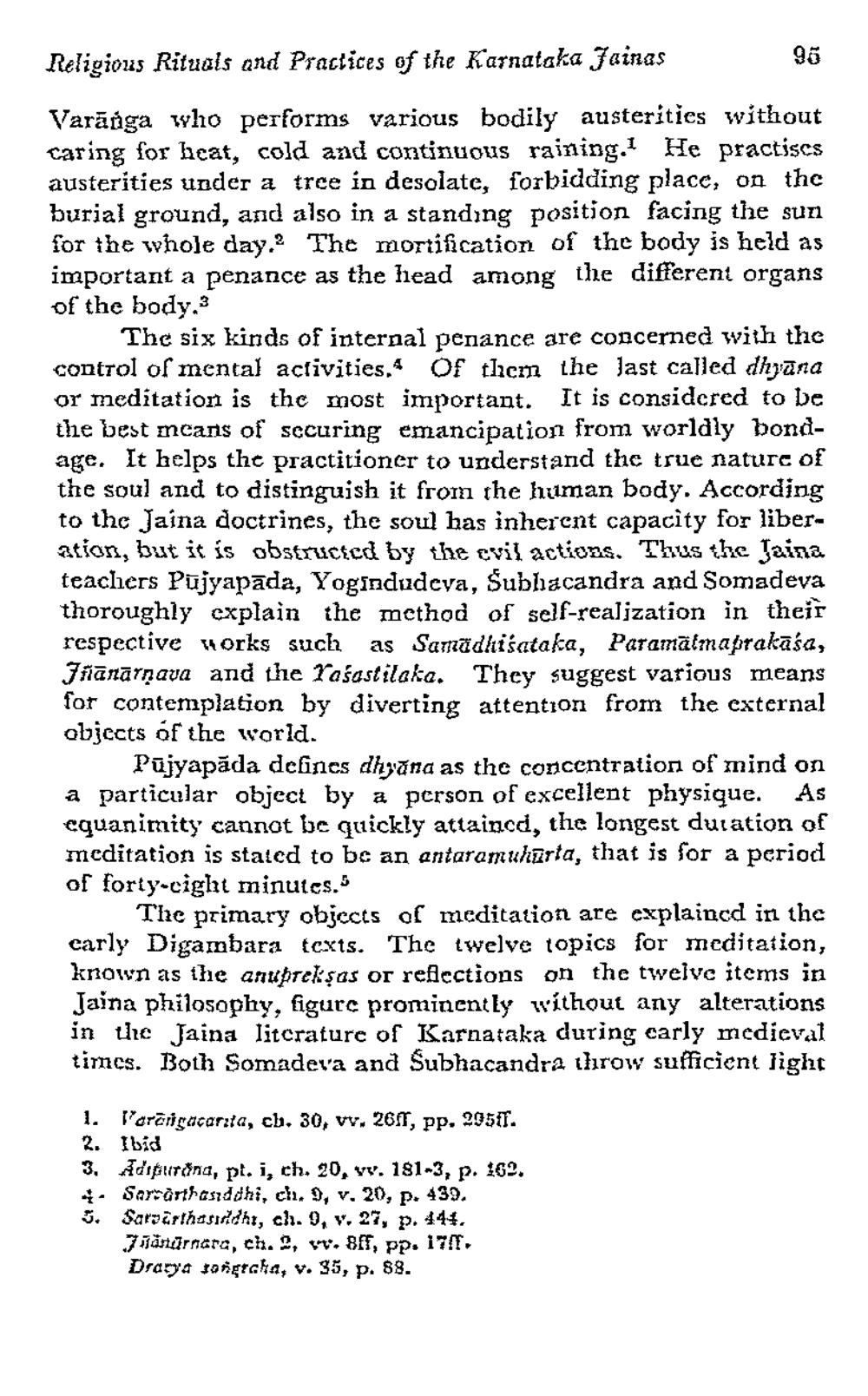________________
Religious Rituals and Practices of the Karnataka Jainas
96
Varāóga who performs various bodily austerities without Caring for hcat, cold and continuous raining. He practiscs austerities under a tree in desolate, forbidding place, on the burial ground, and also in a standing position facing the sun for the whole day. The mortification of the body is held as important a penance as the head among the different organs of the body. 3
The six kinds of internal penance are concerned with the control of mental activities. Of them the last called dhyāna or meditation is the most important. It is considered to be the best incans of securing emancipation from worldly bondage. It helps the practitioner to understand the true nature of the soul and to distinguish it from the human body. According to the Jaina doctrines, the soul has inherent capacity for liberation, but it is obstructed by the cvil actions. Thus the Jaina teachers Pūjyapāda, Yogindudeya, Subhacandra and Somadeva thoroughly explain the method of self-realjzation in their respective works such as Samadhisataka, Paramälmaprakāśa, Jilānārnava and the Taśastilaka. They suggest various means for contemplation by diverting attention from the external objects of the world.
Pūjyapāda dcfincs dhyana as the concentration of mind on a particular object by a person of excellent physique. As cquanimity cannot be quickly attained, the longest duration of mcditation is stated to be an antaramulārta, that is for a period of forty-cight minutes."
The primary objects of meditation are explaincd in the carly Digambara texts. The twelve topics for meditation, known as the anupreksas or reflections on the twelve items in Jaina philosophy, figure prominently without any alterations in the Jaina litcrature of Karnataka during carly medieval times. Both Somadeva and Subhacandra throw sufficient light
1. l'orarigacanta, cb. 30, vv. 2017, pp. 20541. 2. Ibid 3. Adipurana, pt. i, ch. 20, vv. 181-3, p. 162.
- Sarmarthasiddhi, ch. 9, v. 20, p. 439. 5. Sarwarthasiddhi, ch. 9, v. 27, p. 444.
janarnara, ch.2, v. 8f1, pp. 17/1 Drarya tangraha, v. 35, p. 88.




